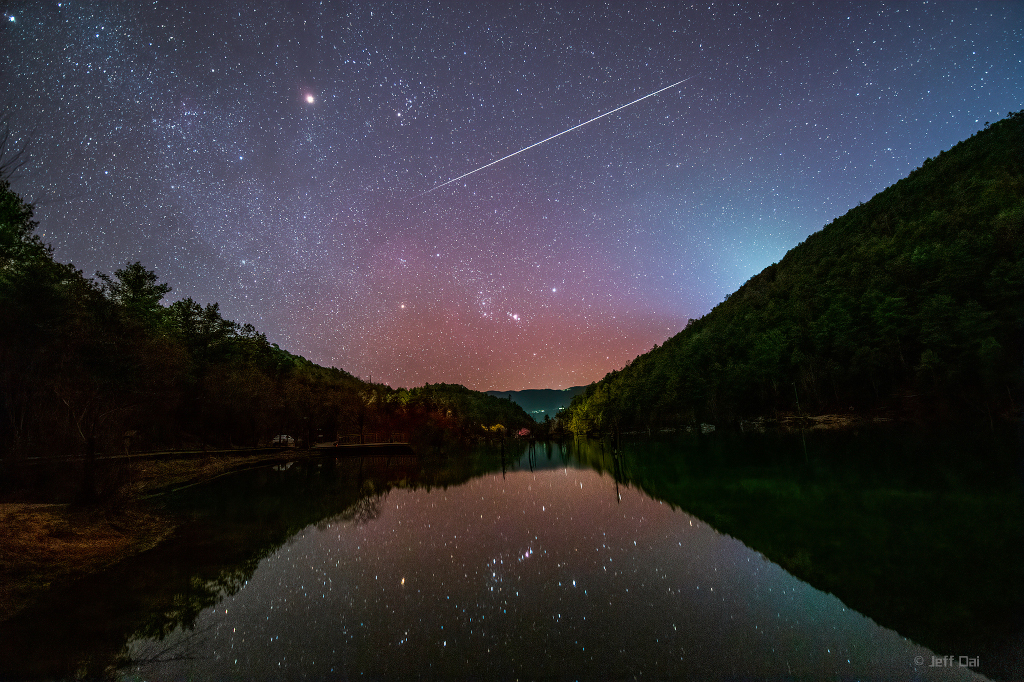2022年12月16日
The Geminid
Image Credit & Copyright: Jeff Dai (TWAN)
Explanation: Returning from beyond the Moon, on December 11 the Orion spacecraft entered Earth’s atmosphere at almost 11 kilometers per second. That’s half the speed of the grain of dust that created this long fireball meteor when it entered the atmosphere on December 13, near the peak of the annual Geminid meteor shower. As our fair planet makes its yearly pass through the dust trail of mysterious asteroid 3200 Phaethon, the parallel tracks of all Geminid meteors appear to radiate from a point in the constellation Gemini. But the twin stars of Gemini hide just behind the trees on the left in this night skyscape from the beautiful Blue Moon Valley, Yunnan, China. Reflected in the still waters of the mountain lake, stars of the constellation Orion are rising near center. Captured before moonrise, dazzling Mars is still the brightest celestial beacon in the scene.
Tomorrow’s picture: light-weekend
双子座流星
图像提供与版权: Jeff Dai(戴建峰)(TWAN)
说明: 在12月11日从月球后方返回地球之时,猎户号太空船以接近每秒11公里的速度切入地球的大气层。而这个速度,则是在12月13日双子座流星雨极大期附近,曳出这道颀长火流星迹的尘埃微粒,穿过大气层的速度之半。当我们美丽的地球每年穿过神秘的小行星3200 Phaethon(法厄同)的尘埃尾流时,所产生的双子座流星之平行迹线,皆看似辐散自双子座内的辐射点。不过,在这幅摄于中国云南省美丽的蓝月谷的夜空图像里,双子座的双子星隐藏在左侧绿树的后方。此外,在山湖平静湖面的中心附近,可见到倒映的东升猎户座群星。而在这片星空里,耀眼的火星依旧是其中最明亮的天体明灯。
明日的图片: light-weekend







